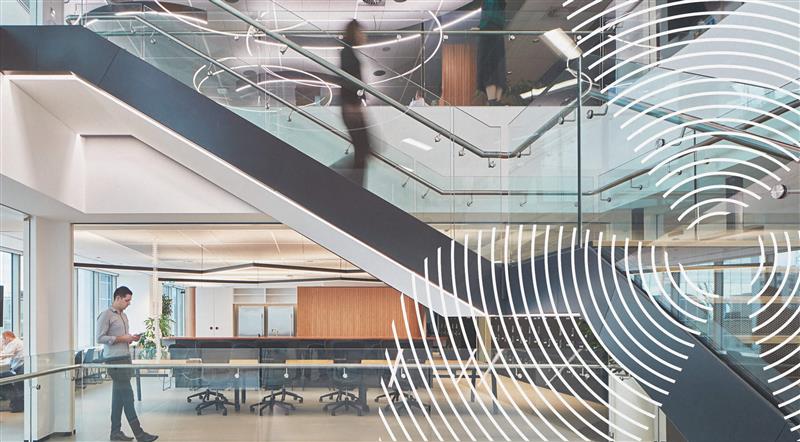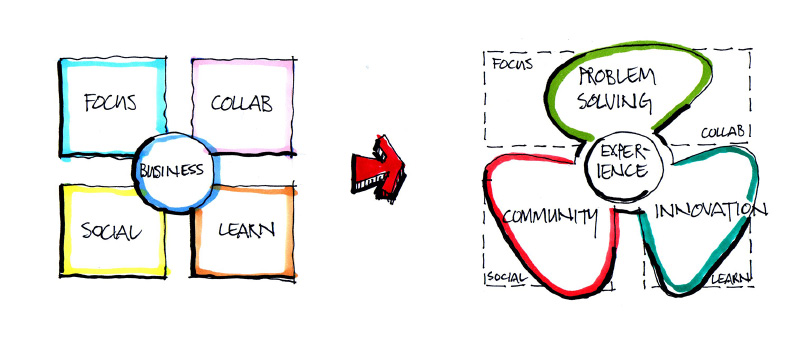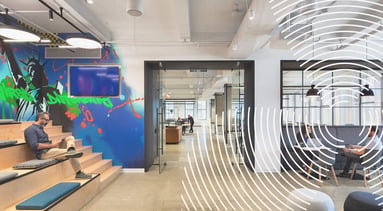
As you reimagine your workplace strategy, consider how your plans should be influenced by the sector you’re in, the work your people do, and your setting.
Real estate executives are most-likely having to rethink their entire future office strategy in response to COVID-19. That’s why we’re offering a series of articles with tips on managing your way through the crisis. This week, we look at how to calculate your capacity, space and budget to inform and evidence your future office strategy.
The global impact of coronavirus on the workplace
Our global client surveys show that 20-60% of the workforce will now work remotely as a result of COVID-19, and 10-30% of office space will remain unoccupied (in addition to the 40-50%+ that was already unoccupied pre-coronavirus). So a workpoint could now remain unoccupied 60-80% of the time – requiring some dramatic changes.
But can you risk building your future office strategy on global averages? Wouldn’t it be better to tailor your strategy around your own industry and context?
Let’s start with the office profile BEFORE coronavirus
Our past data shows how, on average, people divided their office time across the four work styles:
- Focus work 60%
- Collaboration 25%
- Learning 8%
- Social 7%
How future work styles will change
Our workplace model for the future, Propeller, responds to COVID-19, creating a framework for blending the best of home and office work. It replaces those four workstyles with three new office experiences: problem-solving, innovation, and community. On average, they break down like this:
- Community 45%
- Innovation 30%
- Problem-solving 25%

But again, these are averages. And while they’re helpful, we don’t think you should build your future office strategy on anything other than precision data.
Your industry affects your workplace strategy
Future office spaces must be reduced, optimised and repositioned. But how? This is a deep question and demands an evidence-based approach. You need the latest data on where people are working (and where they work best, which may not be the same thing), what they do, and what they need to do it. And, crucially, what kind of bias their work has.
For example, are their priorities more around community, innovation, or problem-solving? This can vary by individual, by team, by division, by company and by industry.
If you don’t have this data, Unispace can help. To accompany our future workplace model Propeller, we’ve developed a highly tailorable WorkReady Survey, which delves deep into employee sentiments and their work styles.
How do work styles vary by industry?
We’ve talked to our clients around the world and then crunched the numbers. Here’s what we found.

Sectors with a problem-solving bias
For organisations in finance, legal, accounting, mining & natural resources, utilities, construction, the public sector and publishing, the average balance (see above) alters to:
- Problem-solving 45%
- Community 30%
- Innovation 25%
Sectors with an innovation bias
For businesses in pharmaceuticals, biotech, technology, data, logistics, fashion & beauty, manufacturing and defence, the balance shifts to:
- Innovation 50%
- Problem-solving 25%
- Community 25%
Sectors with a community bias
For consulting, media and the arts, property, creatives and insurance, work divides as follows:
- Community 45%
- Innovation 30%
- Problem-solving 25%
So how do you adapt your future office strategy?
For people to be happy, comfortable and productive in the work they do, they need a highly tailored workspace. That will affect the kind of spaces they use (and when); their physical environment; their furnishings, equipment and amenities; their sensory stimulants and much more.
Zone and space design will be crucial. Not only are cellular offices a thing of the past, but so are most serried ranks of desks. We believe the future is about flexible, organic, shared spaces where people can do their best teamwork – since individual work is more likely to get done at home.
That way, when people are in a particular zone, they are emotionally and physically stimulated to perform. They can benefit from curated experiences in which they are optimally productive.
Getting the balance right for your business
Unispace offers three key tools:
- Propeller – our workplace strategy for the future
- WorkReady Survey – to gauge employee needs and sentiment
- Predictive analytics – we’ve developed a series of tools which take what we know about global averages, but also feeds in your own data. This provides the capacity, space and budget calculations you need to inform and evidence your future office strategy.
Get in touch to start a conversation. And check back next week for our article on experience-based working.


